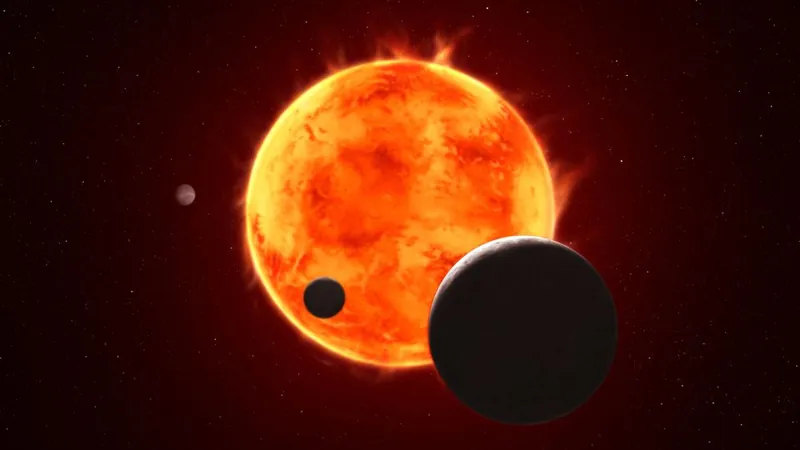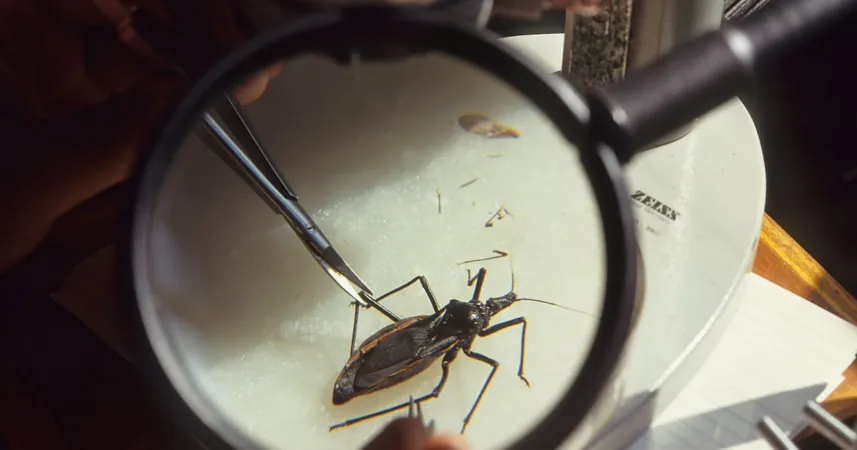
Is This the Earth-Like Exoplanet We've Been Waiting For?
2025-09-18
Author: Amelia
Astronomers on the Verge of Major Discovery
Astronomers are tantalizingly close to uncovering an Earth-like atmosphere on an exoplanet, thanks to groundbreaking observations from the James Webb Space Telescope. This ambitious study could redefine our understanding of habitability beyond our planet.
Discovering TRAPPIST-1: The Beer-Inspired Exoplanet System
The focus of this thrilling research is TRAPPIST-1, a planetary system approximately 40 light-years from Earth, discovered in 2016 by Belgian astronomers who humorously named it after their favorite beer. This system contains at least seven rocky planets, with three situated in the habitable zone—meaning they could potentially harbor liquid water if they possess an atmosphere.
Eyes on TRAPPIST-1 e: The Best Candidate Yet
Among these intriguing worlds, TRAPPIST-1 e stands out as the fourth planet from its star and the subject of a recent study published in The Astrophysical Journal Letters. Preliminary observations conducted in 2023 revealed no definitive evidence against the presence of an atmosphere, sparking excitement among the research team.
According to astronomer Néstor Espinoza, the possibility of TRAPPIST-1 e having an atmosphere remains alive. "This is super exciting, as we have a follow-up program with 15 additional observations planned," he stated enthusiastically.
What Makes TRAPPIST-1 e So Special?
TRAPPIST-1 e is intriguing not just because of its location but also due to its Earth-like dimensions and its rapid orbit around a diminutive star every six days. If the star were placed in our solar system, all its planets would fit comfortably within Mercury's orbit.
Observations Reveal More Than Meets the Eye
To search for atmospheric signs, astronomers track the planet as it passes in front of its star, observing changes in starlight to glean information about its atmosphere's composition. So far, observations have ruled out a hydrogen-rich atmosphere, with indications that TRAPPIST-1 e may possess a nitrogen-heavy atmosphere similar to Earth's.
The Quest for Life: What's Next?
Espinoza's team is racing against time to finalize their 15 new observations by the end of the year, with two-thirds already completed. These observations aim to detect atmospheric chemical signatures like methane, a potential biosignature.
Groundbreaking Implications for Astronomy
A confirmed atmosphere on TRAPPIST-1 e would revolutionize our understanding of red dwarf systems and their capacity to support life. "If these atmospheres can exist around red dwarfs, then the potential for life multiplies exponentially across the universe," Espinoza remarked.
A Universe Full of Possibilities
Even if no atmosphere is found, the implications are profound. Such findings would not only highlight the uniqueness of our own planet but also pave the way for future studies of exoplanets revolving around more sun-like stars.
Incredible Potential Awaits
The excitement surrounding TRAPPIST-1 e continues to grow. Michæl Gillon, who helped discover the TRAPPIST-1 system, expressed optimism over the JWST's potential to detect an Earth-like atmosphere. If the telescope succeeds, we could be on the brink of a discovery that changes everything we think we know about habitable worlds.
Final Thoughts: The Future of Exoplanet Exploration
Experts believe TRAPPIST-1 e sits on a 'tipping point' between being a barren desert or a lush, water-rich planet. With each observation, the stakes grow higher, and the potential unveilings promise to be nothing short of groundbreaking. Stay tuned as we continue this thrilling journey into the cosmos!









 Brasil (PT)
Brasil (PT)
 Canada (EN)
Canada (EN)
 Chile (ES)
Chile (ES)
 Česko (CS)
Česko (CS)
 대한민국 (KO)
대한민국 (KO)
 España (ES)
España (ES)
 France (FR)
France (FR)
 Hong Kong (EN)
Hong Kong (EN)
 Italia (IT)
Italia (IT)
 日本 (JA)
日本 (JA)
 Magyarország (HU)
Magyarország (HU)
 Norge (NO)
Norge (NO)
 Polska (PL)
Polska (PL)
 Schweiz (DE)
Schweiz (DE)
 Singapore (EN)
Singapore (EN)
 Sverige (SV)
Sverige (SV)
 Suomi (FI)
Suomi (FI)
 Türkiye (TR)
Türkiye (TR)
 الإمارات العربية المتحدة (AR)
الإمارات العربية المتحدة (AR)